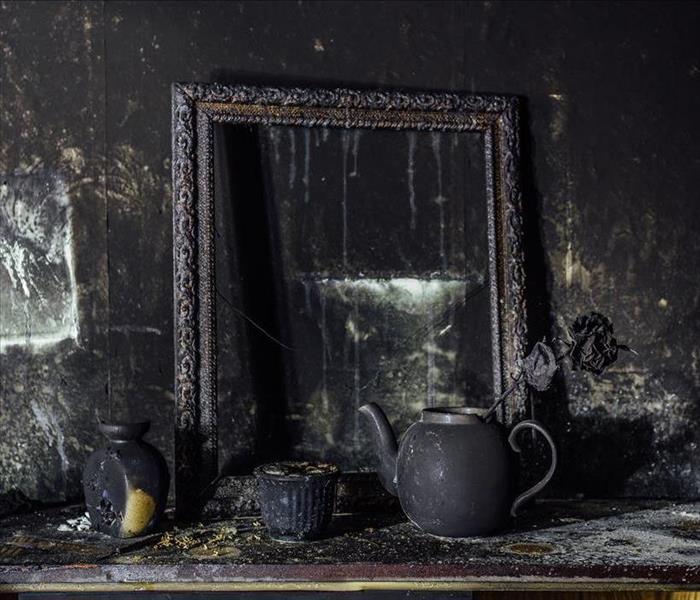What Are Some Different Kinds of Smoke Residue after Fire Damage In Delta?
7/25/2020 (Permalink)
 SERVPRO professionals have the skills and expertise to tackle the different types of smoke and soot residue left behind after a fire.
SERVPRO professionals have the skills and expertise to tackle the different types of smoke and soot residue left behind after a fire.
SERVPRO Categorizes Smoke and Soot Residue into Four Categories.
Smoke and soot residue is one of the toughest challenges for restoration after an incidence of fire damage in Delta. The ability to restore your property is determined by the kind of residue left behind. Although some kind of residue is not that difficult to clean, other kinds can take more time and effort.
SERVPRO professionals use a multitude of techniques and equipment to eliminate the different kinds of smoke residue after fire damage to your Delta home. Our IICRC certified technicians classify smoke and soot residue into four different categories: Dry residue, wet residue, protein residue and fuel oil residue.
Dry and Wet Smoke Residue
Every fire generates smoke in both the wet and dry category. While some fires may produce a predominantly dry residue, some others produce predominantly wet soot. If the fire is fast burning, with an abundant oxygen supply, dry residue is deposited. On the other hand, fires that burn slower and have less oxygen supply, produce mostly wet residue. The burning of synthetic material also produces wet smoke. Material such as wood, cork, and paper, generally produce a drier smoke.
It is easier to clean dry residue compared to the wet and greasy residue. SERVPRO technicians can use more extensive cleaning procedures to clean the wet soot. The time required for restoration is greater for wet residues than for dry residues.
Residue Due to the Burning of Protein
The residue formed due to the combustion of protein is most common in kitchen fires. Burning of protein-rich material such as meat, poultry or fish produces this kind of residue. It can have a color between amber to yellow and can form an oily layer on walls and ceiling. The odor is also one of the most significant problems with such residue. Cleaning of protein residue requires more time and deodorization is a significant part of the restoration process.
Fuel Oil Residue
Although it is less frequent, furnace puff-backs can produce a thick smoke due to the incomplete burning of the fuel oil. Improper venting can result in the smoke particle deposition in the ducts. The fuel oil soot can be greasy and requires more time and effort to clean.
Smoke and soot is very invasive and can penetrate various cavities within your home, causing hidden damage and odor. Our smoke damage expertise and experience allows us to inspect and accurately assess the extent of the damage to develop a comprehensive plan of action.
Smoke and soot facts:
- Hot smoke migrates to cooler areas and upper levels of a structure.
- Smoke flows around plumbing systems, seeping through the holes used by pipes to go from floor to floor.
- The type of smoke may greatly affect the restoration process.
Different Types of Smoke
There are two different types of smoke–wet and dry. As a result, there are different types of soot residue after a fire. Before restoration begins, SERVPRO of Montrose/Telluride will test the soot to determine which type of smoke damage occurred. The cleaning procedures will then be based on the information identified during pretesting. Here is some additional information:
Wet Smoke – Plastic and Rubber
- Low heat, smoldering, pungent odor, sticky, smeary. Smoke webs are more difficult to clean.
Dry Smoke – Paper and Wood
- Fast burning, high temperatures, heat rises therefore smoke rises.
Protein Fire Residue – Produced by evaporation of material rather than from a fire
- Virtually invisible, discolors paints and varnishes, extreme pungent odor.
Our Fire Damage Restoration Services
Since each smoke and fire damage situation is a little different, each one requires a unique solution tailored for the specific conditions. We have the equipment, expertise, and experience to restore your fire and smoke damage. We will also treat your family with empathy and respect and your property with care.
Call SERVPRO of Montrose / Telluride at (970) 240-6970 today to speak with one of our restoration experts.





 24/7 Emergency Service
24/7 Emergency Service